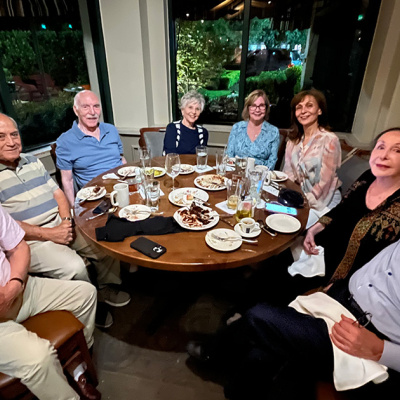UT Trains Fukushima Executives on Crisis Communication

More than two years after the Fukushima Daiichi nuclear disaster made headlines around the world, Japan is still reeling. As many as 400 tons of radioactive water still leak from the partially destroyed power plant into the ocean daily, and the plant's operator, Tokyo Electric Power Company (TEPCO), has come under scrutiny for poor planning—as well as for struggling to communicate the plant's news to the public.
Enter The University of Texas. At the invitation of UT experts, six TEPCO executives traveled from Japan to Austin last week for a crash course in crisis communications. They participated in writing workshops, observed a crisis simulation, talked about digital strategy, and built a social media plan.
"The hope is that they'll take those skills back to Japan and apply them," says UT System associate vice chancellor Dale Klein, who organized the visit. Klein is an internationally renowned nuclear expert and UT professor who also serves on a TEPCO reform committee
Jeff Hunt, BJ ’84, an adjunct assistant professor in UT's Department of Advertising, oversaw the training, which also included a brand presentation by advertising professor John Murphy. Hunt says it filled a vital need. "TEPCO wasn't framing information and putting it into context for reporters," Hunt says. "They were putting out raw data, not acknowledging information leaks, and facing a lot of challenges."
The company's press releases regularly contain such inscrutable phrases as "Accumulated water in Units 1 & 2 and Units 3 & 4 building will be maintained around the level of OP 3,000." As a result, Hunt says, reporters have struggled to clearly translate news from Fukushima.
But that will soon change, according to TEPCO general manager Hiroshi Yamaguchi, who participated in the training. "We haven’t been very effective in our communication, especially to the world," Yamaguchi says. "We had a very intense and productive week in Austin, and now we are improving our press releases and our communications strategy."
The Japanese executives weren't the only ones benefiting from the training—it was also a win-win for UT students. As the executives watched, Hunt staged a crisis simulation with the students in his Strategies in Public Relations class, tasking the students with responding quickly to a pipe leak that had happened at Fukushima just two weeks earlier. Yamaguchi says the simulation was his favorite part of the training. "I was very impressed with the students, I learned a lot, and I think they were happy to have us there, too," he says.
Photo by Tatsuya Matoba.






